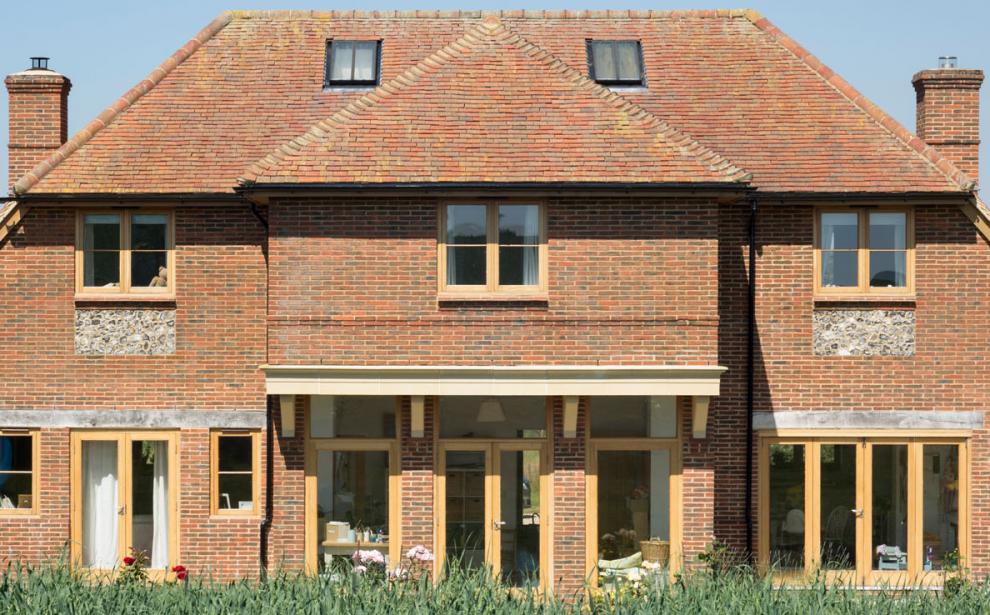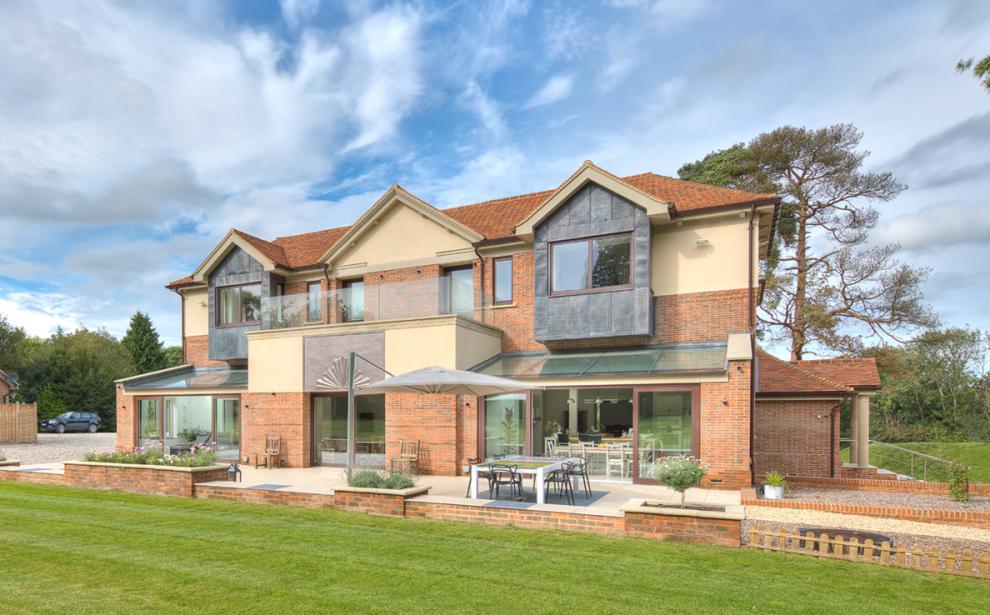Just another brick in the wall?
Just another brick in the wall?
Building with bricks – handmade or machine-made?
Have you ever really looked at a brick? Seen the colour variations within a single brick – pink to plum, buff to brown - its shape and contours. Noticed how neatly it fits into your hand. For centuries, clay bricks have been the basic building block for houses across the UK.
Which is the right brick for your project? Your pick will make a massive difference to its overall appearance. The options may seem overwhelming but there are ways to narrow down your choice. Broadly speaking, bricks on the facade of buildings, known as facing bricks, can be divided into two types: handmade or machine made.

Handmade bricks, new farmhouse, architect Scot Masker, photographer Richard Chivers
What are handmade bricks?
Handmade bricks are (as the name suggests) thrown skilfully by hand into moulds before being dried and fired in a kiln. No machines are used to compact or cut the clay. The resulting bricks show subtle variations in texture and even shape, but irregularities are all part of the charm. Handmade products give a unique look to a property because no two bricks are identical. They are more expensive than machine made versions, but the mellow, variable tones and uneven textures give huge character.
“There is no comparison between a machine-made and handmade brick. A handmade brick is far more beautiful product, although I know I’m biased,” said Tony Minter, managing director of Bulmer Bricks. “There are many reasons our customers choose handmade, including geologically the right clay to match their houses perfectly. Ours is a bespoke service.”
Scot Masker, founder of Masker Architects, said: “You can always tell a handmade brick from the more open, rougher textures from when the clay was hand thrown into the mould whereas factory made bricks are normally smoother. It’s important to use as many of these craft base processes as we can to try and keep alive the unique offer they provide to the building industry - otherwise every building looks alike. Handmade bricks made from local clays show regional variation (in colour and texture) which is part of making a place and reflecting the landscape.”
At Bulmer Bricks, bricks are made from the finest London clay, dug from seams worked since the Middle Ages, before being fired in a coal-burning, draught-down kiln. The traditional method of making and drying helps to give the distinctive finish that blends with bricks in historic buildings. The family-run company works on large projects for English Heritage, the National Trust and Historic Royal Palaces, providing the exact size and colour of brick to match the originals. It has reproduced chimneys and pinnacles at Hampton Court but claims to be just as proud of its private residential work. The firm works closely with architects, surveyors and builders to produce the right bricks for individual projects.
Getting a particular aesthetic
Masker used handmade bricks for a new farmhouse he designed with views over the Hampshire countryside. He said: “It was the client’s choice - and it suited the rustic aesthetic we were trying to achieve. Instead of standard size bricks (65mm x 215mm) we used thinner, longer bricks (2ins x 10 ins). The irony is that it wasn’t that much more expensive than using a good quality standard brick and it gave the house a highly individual look.”
An eco-mansion Masker designed also used handmade bricks. He said: “We were going for a 1930s classicism and the choice of brick supported the chosen aesthetic. The house replaced a derelict, locally listed property in a conservation area and so we had to take special measures to show it was a well-crafted building.”
Handmade bricks are often used when renovating a period property to protect its character and value. Victorian houses, for example, have bricks of different sizes to modern, machine made ones. “Planning officers will usually ask to approve the building materials and it is highly likely they will want handmade bricks,” said Masker.
Most facing handmade bricks are made to order. They can in theory be made to almost any specification: different clays, shapes and sizes. Handmade bricks take time to produce, something to consider at the project planning stage.

Handmade brick, eco-mansion, architect Scot Masker, photographer Martin Gardner
What are the advantages of machine-made bricks?
Machine-made clay bricks involve more modern, automated methods of production. They offer a more affordable alternative, so are best for those on a budget. The bricks tend to be uniform in appearance with a smoother, sharper-edged finish. If you’re looking for a consistent colour and precision across the whole building project, then machine-made could be the way to go.
For those wanting a smooth finish, extruded or wire-cut clay brick is good option. The clay is pushed out in a column and then wire-cut before drying and firing in kiln. That said, standard bricks can be tumbled, or oxides added to create a weathered or distressed look.
Soft mud bricks are made by dropping clay into sand-coated moulds which produce a face with slight creases. While this was originally done by hand, today it is generally a machine-made process. Soft mud bricks have a more earthy, textured finish than wire-cut.
Engineering bricks, meanwhile, have exceptionally high compressive strength, making them ideal choices for projects that involve considerable exposure to water. These bricks are often used for damp proof courses and retaining walls.
What colour brick should I choose?
There is a plethora of colours available – from brown and blue tones to yellow, orangey red, through to cream and white - for machine made and handmade bricks. Colour is largely down to the type of clay, addition of other materials and method of firing. Certain colour bricks are indigenous to areas. For example, creams and yellows are common around London and Cambridgeshire while red bricks are seen in the north and blue bricks are typical in the Midlands. Planning officers are likely to prefer projects made from bricks that are typical to the area.
If you’re adding an extension to a period property and want to match original bricks or your house is in a conservation area, handmade bricks made from local clays are best for blending in and preserving the character of a place. Handmade versions also provide more flexibility as they can be made to order in non-standard sizes, creating a bespoke look but this is reflected in the price. So, they are not for everyone. If you are extending a contemporary house, have a more limited budget or want a sharp, consistent finish to your build, then machine made bricks are likely to be a better pick.
